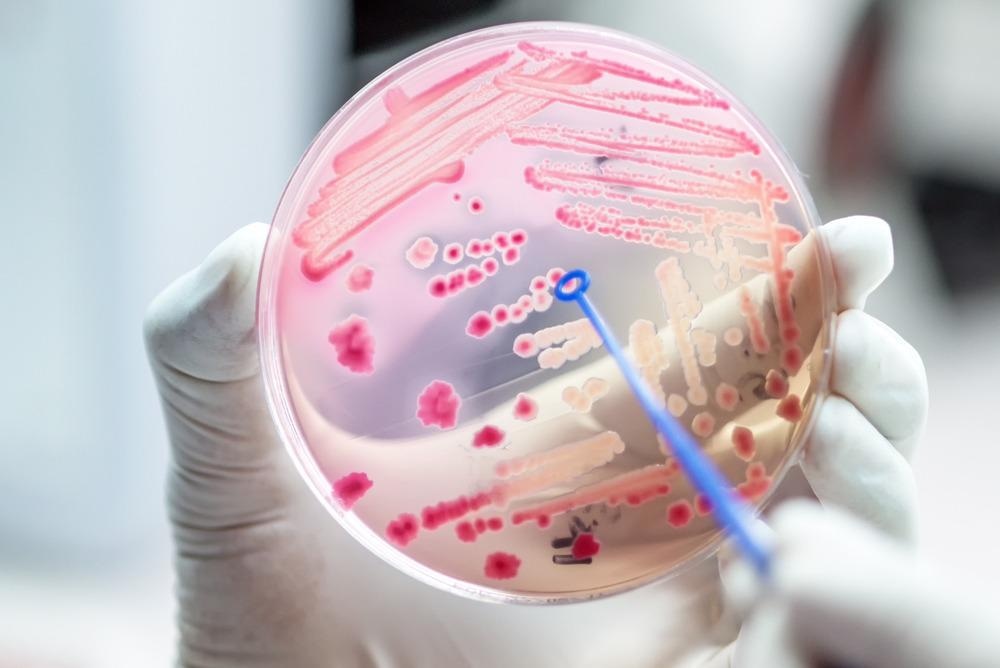In a study published recently in the journal Analytical Chemistry, to examine the fluid photocatalytic reactions of diverse metal-organic frameworks on-site, a three-dimensional (3D) shell-isolated nanoparticle-enhanced Raman spectroscopy (SHINERS) platform was constructed.

Study: In Situ Monitoring of Dynamic Photocatalysis of Metal–Organic Frameworks by Three-Dimensional Shell-Isolated Nanoparticle-Enhanced Raman Spectroscopy. Image Credit: AnaLysiSStudiO/Shutterstock.com
Traditional Disinfecting Procedures
The presence of pathogens in environmental air or water habitats presents a significant danger to health. Traditional disinfecting procedures, such as chemical spray annihilation and ultraviolet irradiation deactivation, may generate hazardous by-products, restricting their proper applicability.
While diverse conductive polymers may be used as long-term antiseptics due to their ability to create reactive oxygen species (ROS) versus diseases. Conversely, metal-organic frameworks (MOFs) are projected to produce conventional semiconductors due to their special photocatalytic characteristics.
The catalytic activities of metal-organic frameworks can be optimized at the cellular scale by sensibly tweaking metal groups or chelates. Furthermore, the huge and well-arranged porous structure of metal-organic frameworks is advantageous to the incorporation of biomolecules that can directly engage the active silica. As a result, many metal-organic frameworks have been devised and manufactured till the present by altering or replacing metallic locations and chelates.
Nevertheless, finding the best metal-organic framework versus microorganisms is difficult since traditional testing procedures are time-consuming.
Current Approaches Followed in the Industry
Furthermore, present approaches for investigating the antibiotic processes of photocatalysts are largely qualitative or former semiquantitative, yielding minimal data. Interestingly, as a surface-sensitive approach, surface-enhanced Raman spectroscopy (SERS) gives subtle vibration-based data associated with biomolecules, allowing researchers to analyze the dynamical photocatalytic activities of metal-organic frameworks in real-time and thereby disclose reactions.
Powerful surface-enhanced Raman spectroscopy impacts, on the other hand, are only generated by coinage-metal photonic nanoparticles, not by substances with moderate plasmonic characteristics. To prolong surface-enhanced Raman spectroscopy to non/low-plasmonic components, several methodologies have been implemented, including the authentic "borrowing" approach, shell-isolated nanoparticle-enhanced Raman spectroscopy (SHINERS), and even the shell-isolated nanoparticle-enhanced Raman spectroscopy-satellite method.
Thus, by utilizing the electromagnetic (EM) field created by the internal gold or silver centers, the Raman emissions of biomolecules collected on the interfaces of the outermost shell were considerably magnified. There are two conditions in these circumstances for obtaining significant and dependable surface-enhanced Raman spectroscopy signals; one is the extremely thin shells for ensuring strong electromagnetic amplification and the other is the Fresnel lens coatings for minimizing the influence of the internal gold/silver centers on the Raman signals of biomolecules.
The mean thickness of published metal-organic frameworks shells, on the other hand, is 50150 nm, and metal-organic framework casings are fundamentally permeable. Additionally, SHINERS is unable to identify realistic metal-organic frameworks reactivity, which is often included in three-dimensional (3D) structured substrates.
These substrates with modest optical bonding properties are incapable of producing a robust electromagnetic field. Furthermore, in actual metal-organic framework catalysis, reactants and by-products are dynamically absorbed and dissolved from the metal-organic framework face. When all of these factors are considered, an appropriate SHIERRS sensing technique for in situ dynamic monitoring of mixed photocatalytic activity of realistic metal-organic frameworks is predicted.
Achieved Outcomes
In this paper, a 3D SHINERS framework was built to identify the continuous change of reactive oxygen species creation in real-time by different metal-organic frameworks.
Ag nanoparticles produced in situ on silicon nanofibers covered with an incredibly thin silicon substrate were at the heart of three-dimensional SHINERS. The metal-organic framework was then self-grown on the base of the three-dimensional SHINERS.
When exposed to sunshine, oxygen molecules were converted into superoxide anions by the photocatalytic activity of metal-organic frameworks. Under the activity of superoxide dismutase (SOD), the superoxide anion may quickly create hydrogen peroxide (H2O2), culminating in the conversion of LMG-to-LMG MG.
In terms of dynamic comparisons, ZIF-67 had the sharpest Raman emission at each timestep, which corresponds to the quickest O2 frequency. It was discovered that ZIF-67 has the lowest secondary energy bandgap, making it the simplest architecture to generate charged particles, owing to the greater photocatalytic activity. In the agar plate test, ZIF-67 had a high antimicrobial rate, up to 99 percent.
To summarise, a 3D SHINERS detecting technique was suggested for dynamic monitoring of the photocatalysts capacity of several metal-organic frameworks to find the best metal-organic framework versus germs. In situ fluid spectroscopy proof of reactive oxygen species generation was monitored by ZIF-8, ZIF-67, and UIO66 utilizing three-dimensional SHINERS under sunlight exposure.
In comparison, ZIF-67 exhibited the most effective photocatalytic capacity to generate reactive oxygen species, which was validated by the energy level assessment of metal-organic frameworks. Antibacterial testing further verified ZIF-67's superior antimicrobial activities. The well-established 3D SHINERS interface allowed real-time and in-situ antimicrobial metal-organic framework detection in fluid photocatalytic activity.
Reference
Cheng, J., Cao, H., Xu, Y., Yunmin Yang, Y. H., & Wang, H. (2022). In Situ Monitoring of Dynamic Photocatalysis of Metal−Organic Frameworks by Three-Dimensional Shell-Isolated Nanoparticle-Enhanced Raman Spectroscopy. Analytical Chemistry. Available at: https://pubs.acs.org/doi/10.1021/acs.analchem.2c00643
Disclaimer: The views expressed here are those of the author expressed in their private capacity and do not necessarily represent the views of AZoM.com Limited T/A AZoNetwork the owner and operator of this website. This disclaimer forms part of the Terms and conditions of use of this website.